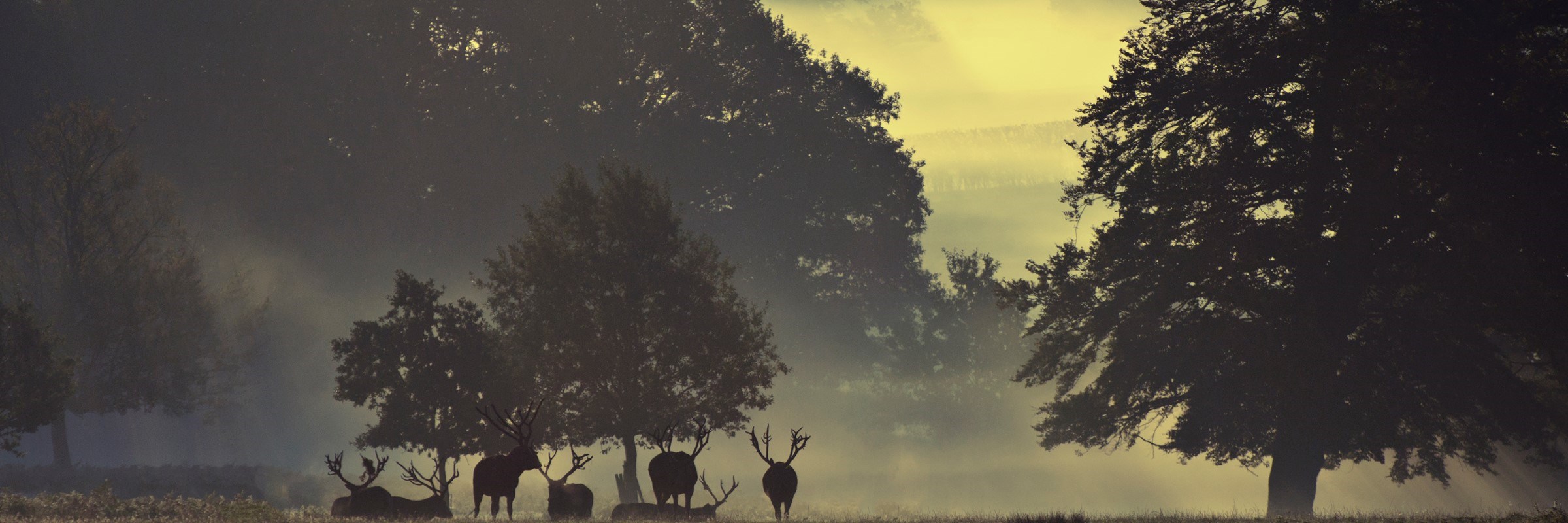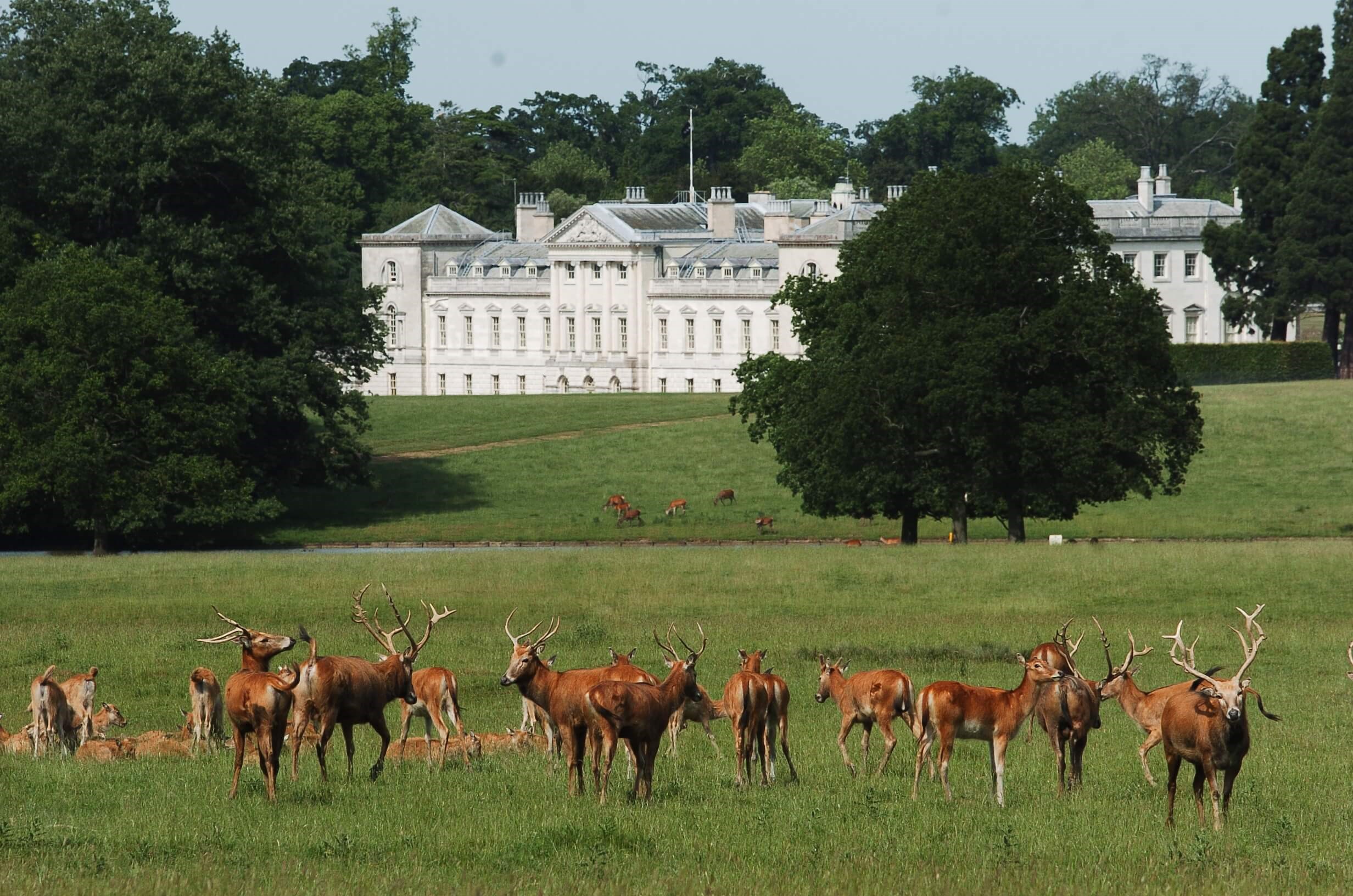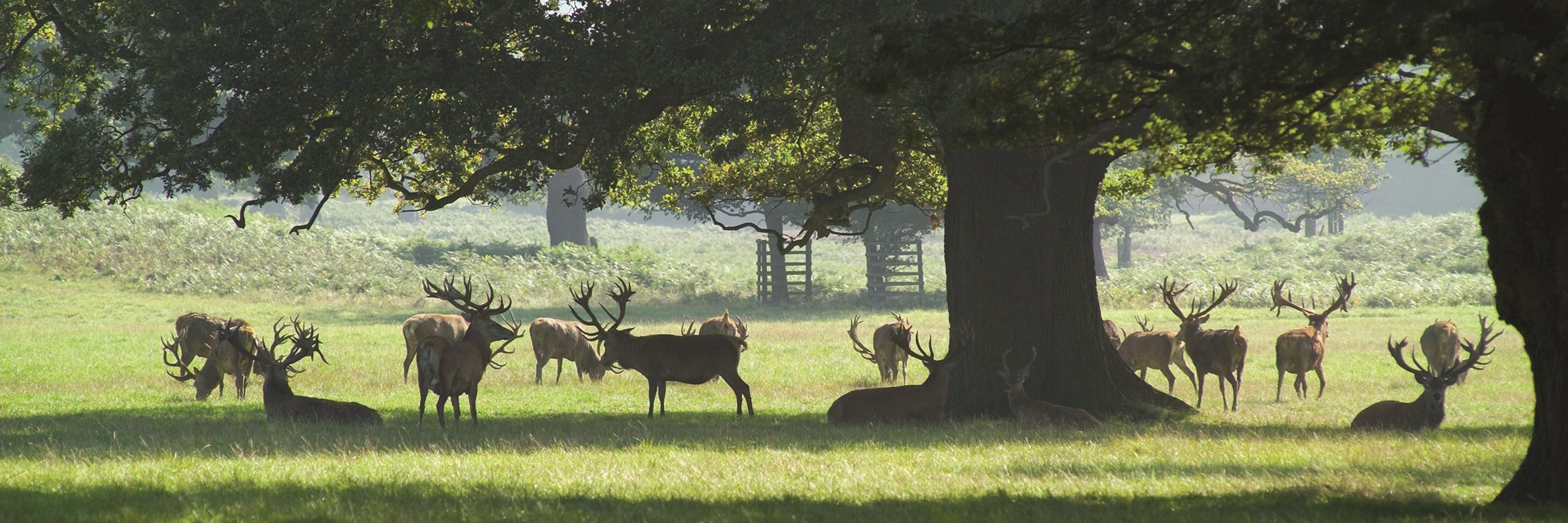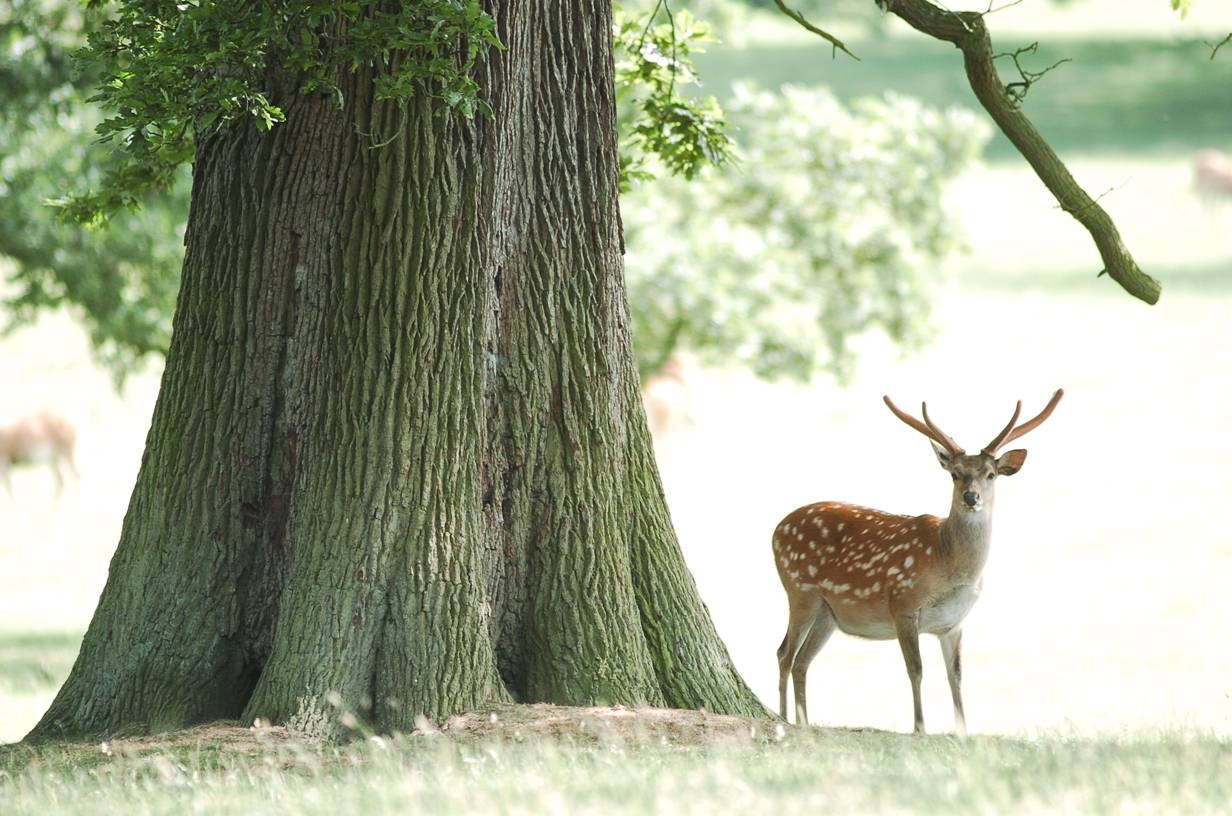
The Origins of Deer At Woburn Abbey
The concept of the Deer Park was introduced to Britain by the Normans with the earliest reference at Woburn dating back to 1661. In a survey, the 5th Earl of Bedford reserved the well-wooded deer park for his own use.
From 1735 onwards there is evidence of Red and Fallow Deer around Woburn Abbey, but detailed records didn’t begin until 1802, under the 6th Duke.
At his death in 1839, the inventory of the Deer Park gives a total of 1,200 Fallow Deer, valued at £1 each (£35 in today's money), and 45 Red Deer, valued at £5 each (£175 in today's money).
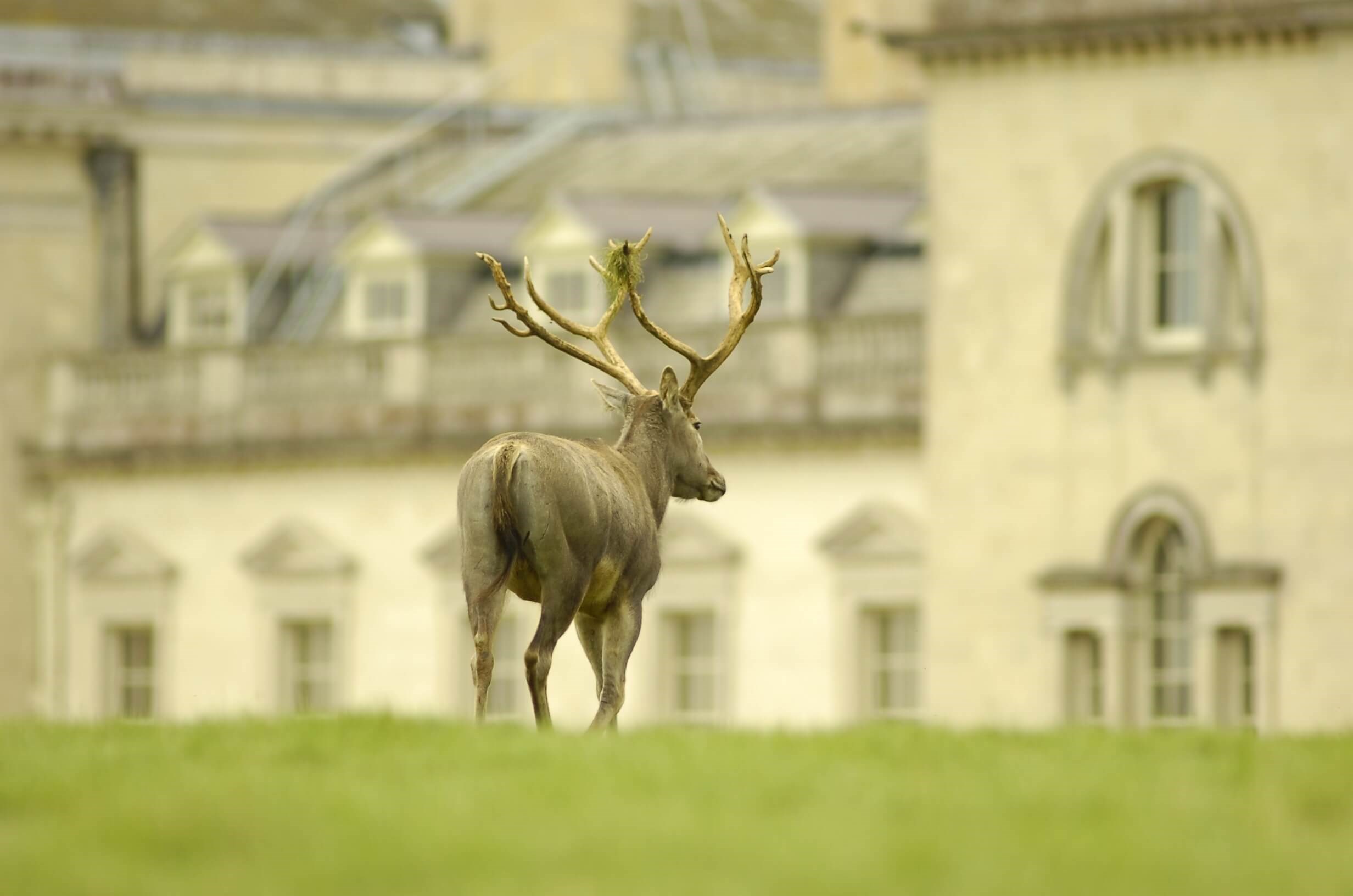
Very little changed until Herbrand Russell became 11th Duke of Bedford in 1893. He was keenly interested in zoology and president of the Royal Zoological Society.
The 11th Duke collected over 42 species to add to the well established Red and Fallow. He was aided by his wife, Mary, who kept a register of animals from 1893-1914, noting births, deaths and purchases.
Amongst the species introduced by the 11th Duke in 1894 were Chinese Water Deer and Reeves’ Muntjac deer. He was by no means the first to introduce the Muntjac to Britain, as the Zoological Society of London had these deer as early as 1838.

Most of the subspecies of Sika Deer have, at one time or another, been present in the park and were kept in separate paddocks to avoid interbreeding. The Manchurian, first introduced in 1894, proved the hardiest. They were turned out into the open Deer Park and a herd of around 180 still remain today. The smaller herd of Japanese Sika, introduced in 1893, eventually left the park in 1941, with the majority going to Whipsnade.
The greatest zoological treasure in the Deer Park has been the Pére David Deer (Milu). Early in the twentieth century, when the species became extinct in its native China, the deer at Woburn Abbey remained the only breeding herd in the whole world. The 12th Duke of Bedford had his own special herd of Fallow Deer which he fed every winter as a small child in the late 1890’s until he left home in 1914. The present population of Fallow Deer in the Deer Park is around 160.






